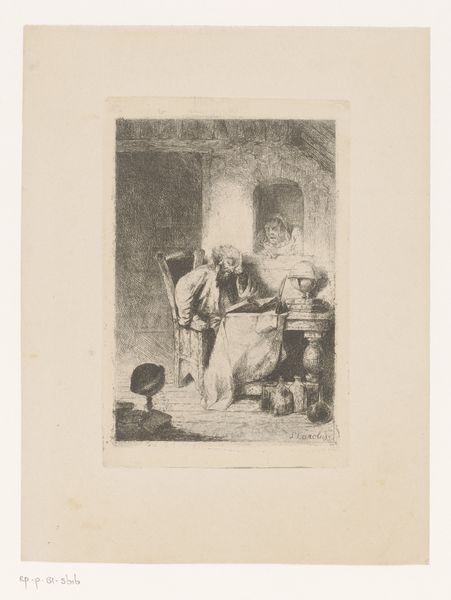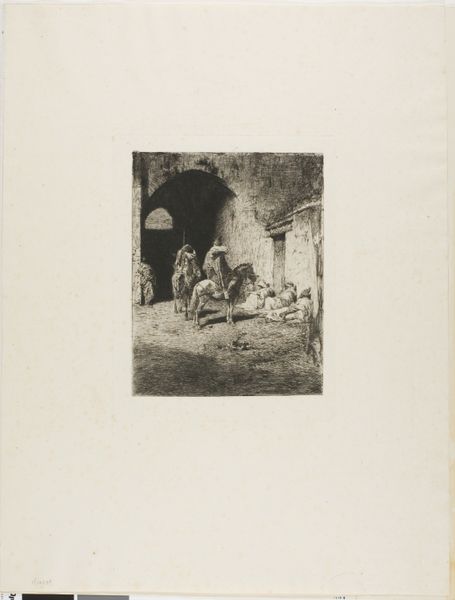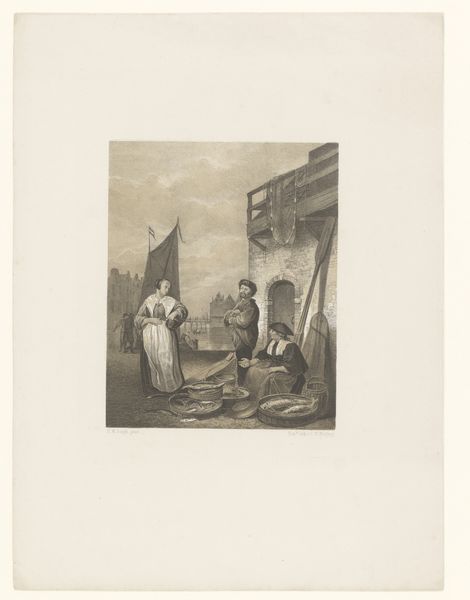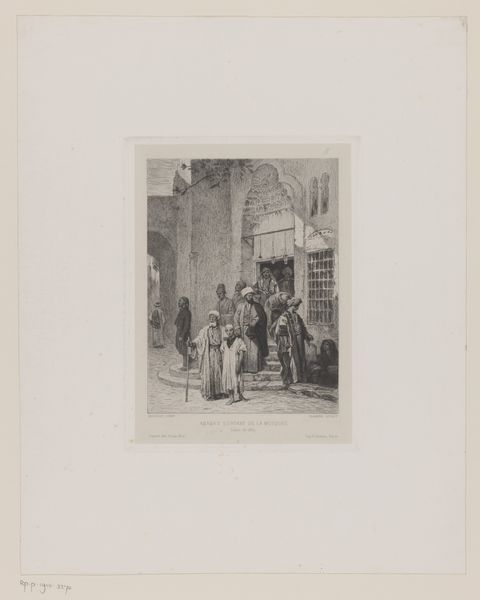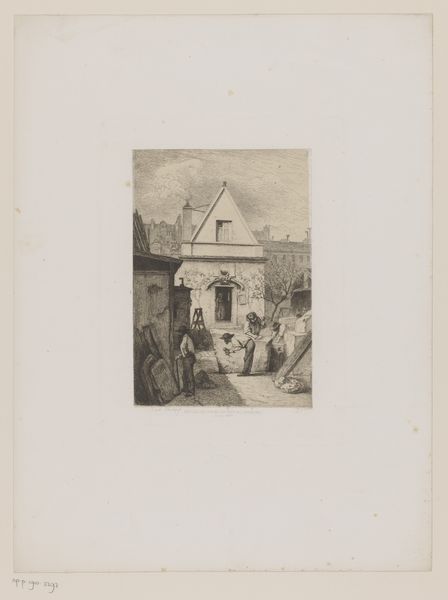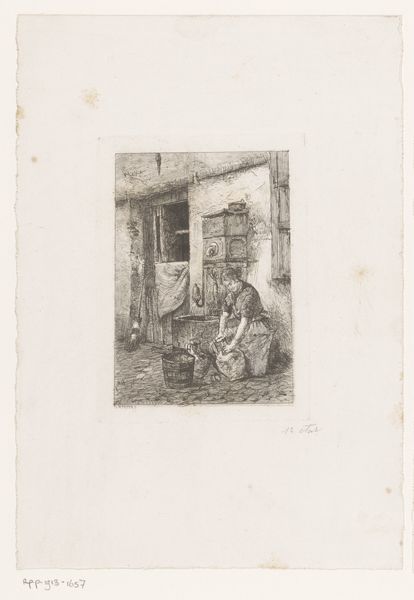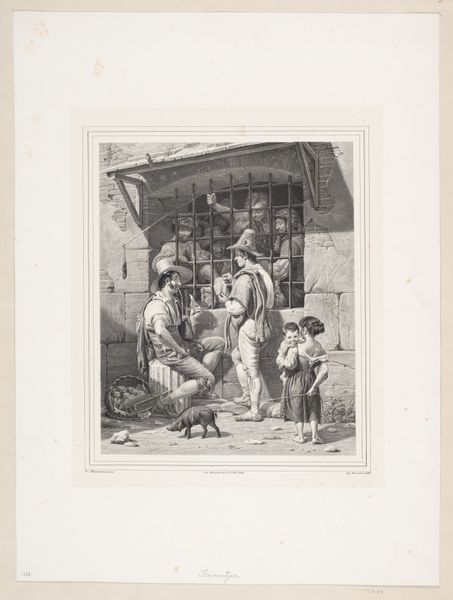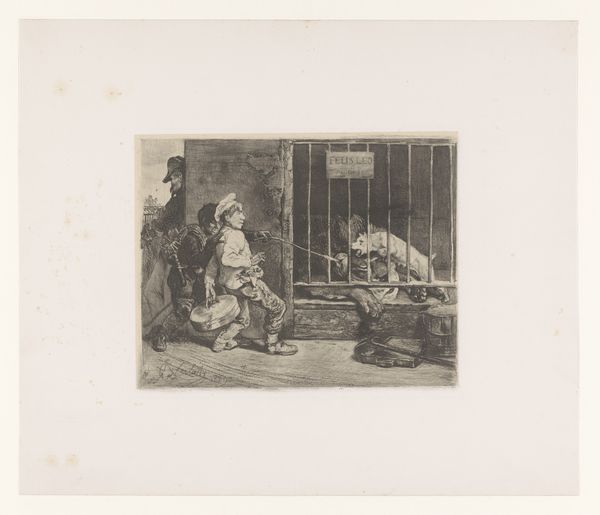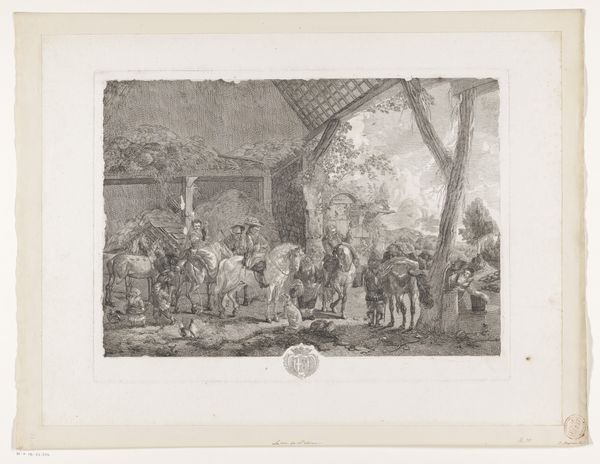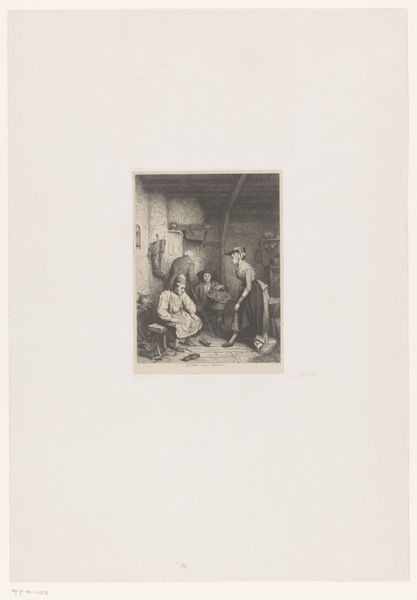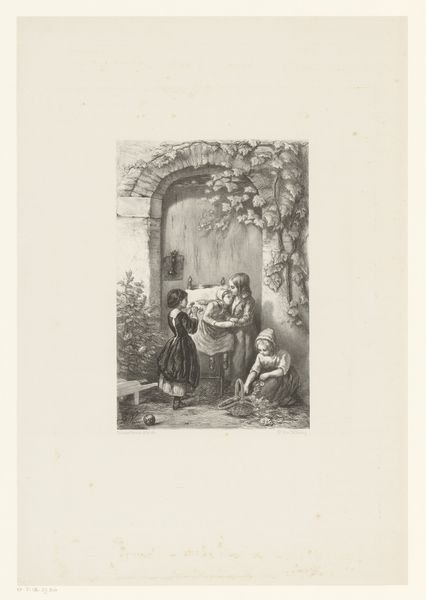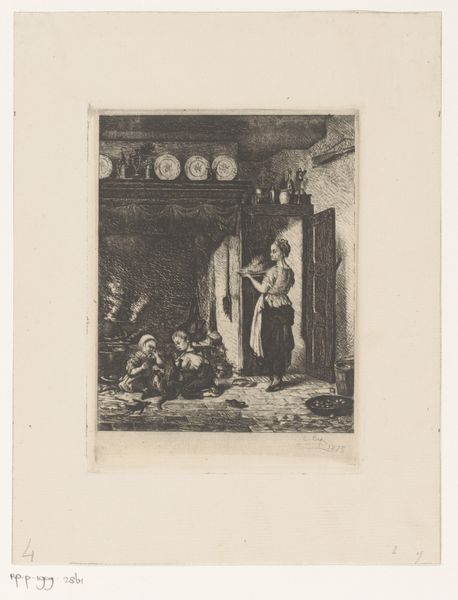
Dimensions: height 388 mm, width 316 mm, height 565 mm, width 478 mm
Copyright: Rijks Museum: Open Domain
Curator: This engraving, “Smoking Turkish Men,” by Johan Georg Otto Graf von Rosen, created in 1868, plunges us into an imagined Eastern scene. What's your immediate take? Editor: A tableau of languid contemplation, wouldn’t you say? There's a certain... stillness about it. A feeling that time is just drifting by. It feels heavy, almost theatrical in its composition. Curator: Yes, the languor is palpable. The artist employs meticulous detail, characteristic of the Romantic Orientalist style, idealizing what, for European audiences, was an exotic ‘other.’ Note how the figures are positioned in the courtyard, engaged in the leisurely act of smoking, while dogs wander freely. It is a "slice of life", so to speak. Editor: The dogs are key! Their presence humanizes the scene but also raises some crucial questions. Are they pets, strays, metaphors for freedom or subjugation? The depiction definitely invites an examination of colonial perspectives. I cannot ignore this sense of the voyeur looking in. This casual "genre" scene risks erasing the very real political and social contexts it romanticizes. Curator: And those contexts are essential. Works like this often reinforced Western notions of the "Orient" as static and timeless, ripe for colonization. Yet, there is a skill in von Rosen’s representation of light and shadow and architecture. Notice the delicate tracery of the windows and how the figures inhabit that space, but within this colonial framing that feels, indeed, "othering". I cannot but help consider the intention in its artful and alluring rendering of, as the title suggests, the Turkish male body. Editor: Exactly! It’s about the power dynamics inherent in looking. We’re not just observing, we’re also complicit in a gaze that defines and ultimately contains these figures within a European fantasy. As far as technique, I would also argue that its black-and-white format actually reinforces that separation. It distances and simplifies. Curator: A point well taken, indeed. That initial tranquility becomes… complex when we view it through a contemporary lens, recognizing the inherent power imbalances within these images. Editor: Ultimately, perhaps it challenges us to question not just the artwork itself, but also our own preconceptions, how we see and categorize "otherness."
Comments
No comments
Be the first to comment and join the conversation on the ultimate creative platform.
